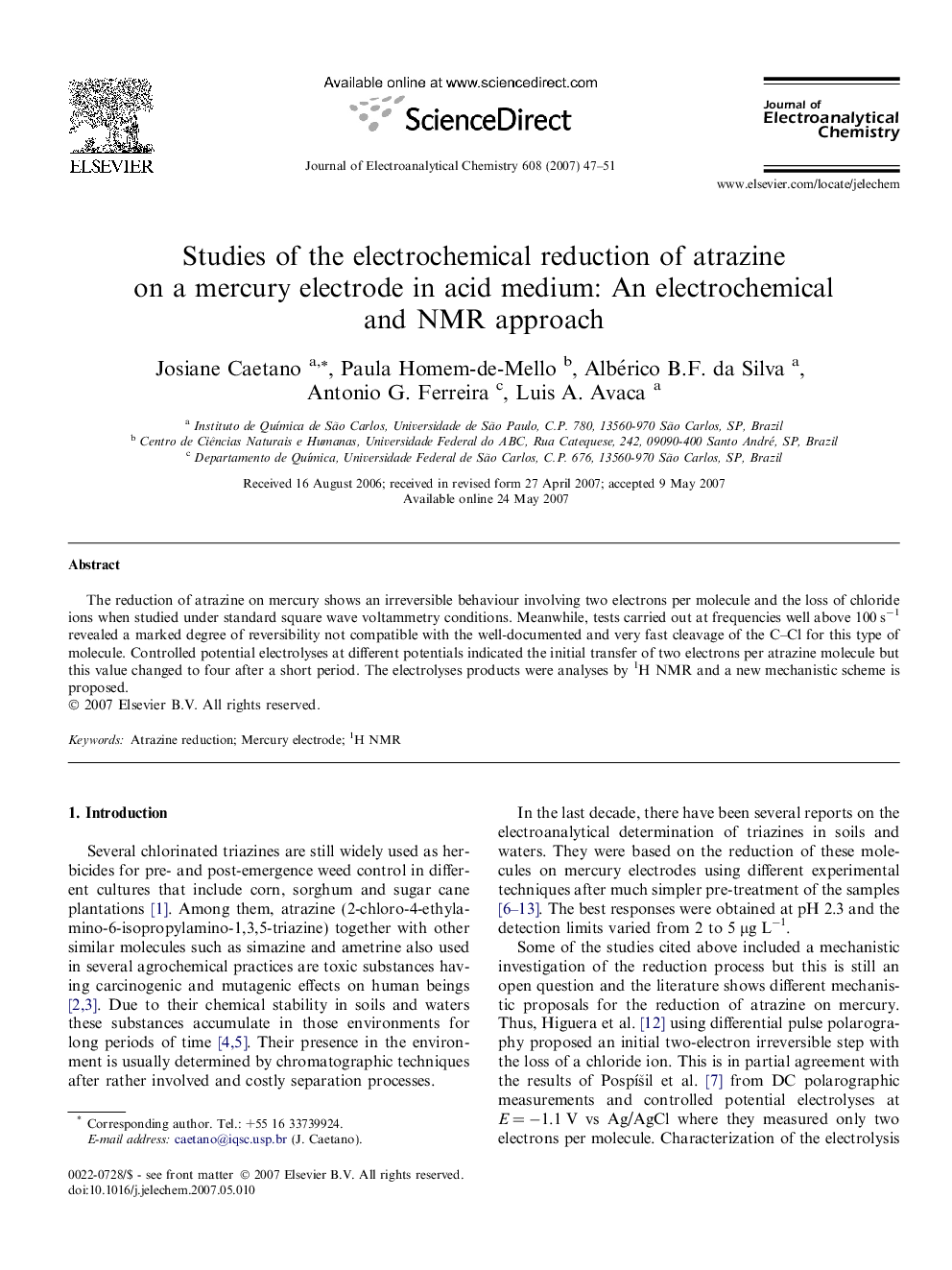| Article ID | Journal | Published Year | Pages | File Type |
|---|---|---|---|---|
| 220977 | Journal of Electroanalytical Chemistry | 2007 | 5 Pages |
Abstract
The reduction of atrazine on mercury shows an irreversible behaviour involving two electrons per molecule and the loss of chloride ions when studied under standard square wave voltammetry conditions. Meanwhile, tests carried out at frequencies well above 100 s−1 revealed a marked degree of reversibility not compatible with the well-documented and very fast cleavage of the C–Cl for this type of molecule. Controlled potential electrolyses at different potentials indicated the initial transfer of two electrons per atrazine molecule but this value changed to four after a short period. The electrolyses products were analyses by 1H NMR and a new mechanistic scheme is proposed.
Keywords
Related Topics
Physical Sciences and Engineering
Chemical Engineering
Chemical Engineering (General)
Authors
Josiane Caetano, Paula Homem-de-Mello, Albérico B.F. da Silva, Antonio G. Ferreira, Luis A. Avaca,
